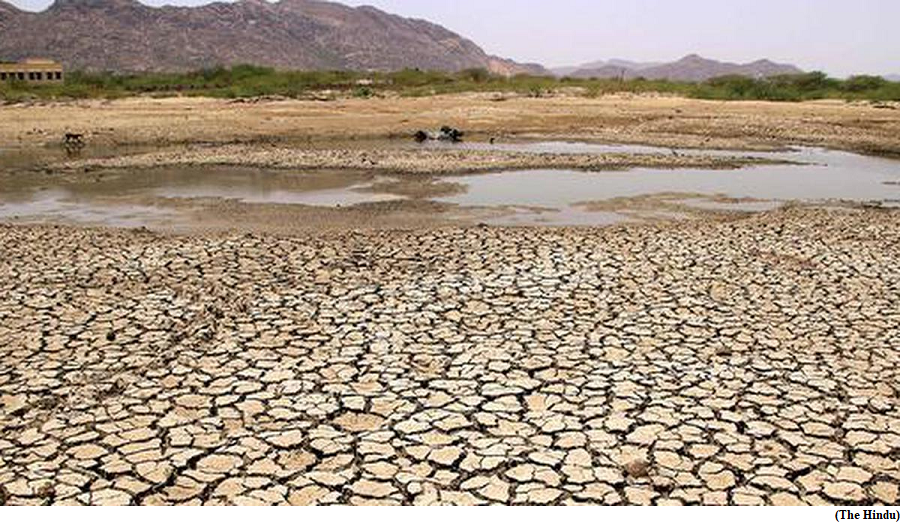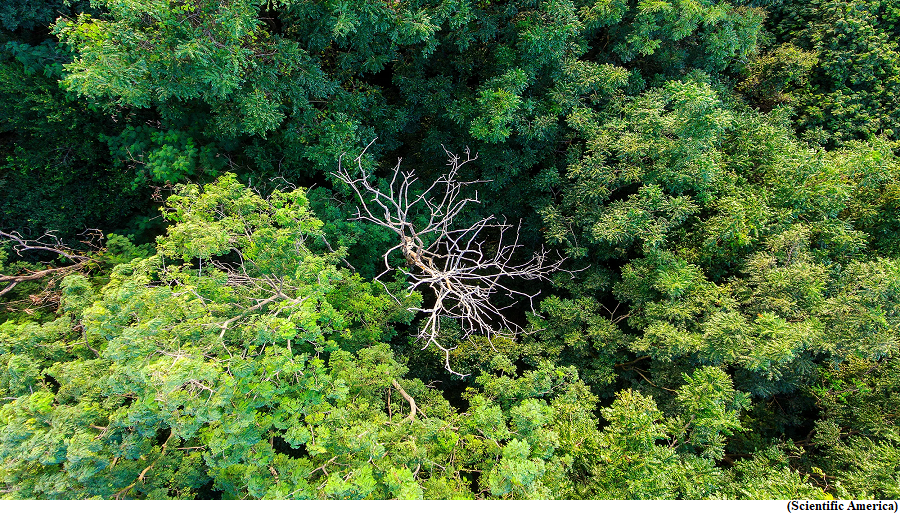Asian Development Bank, Centre to open climate change and health centre in Delhi (GS Paper 2, International Organisation)

Why in news?
- Having bagged the first WHO Centre for Global Traditional Medicine, to be set up in Gujarat, India is now all set to open a climate change and health hub in New Delhi in partnership with the Asian Development Bank (ADB).
- Global Traditional Medicine in Jamnagar will aim to
- provide leadership on global health matters pertaining to traditional medicine;
- ensure the quality, safety, efficacy, accessibility, and rational use of traditional medicine;
- develop norms, standards, and guidelines in relevant technical areas; and
- develop tools and methodologies for data collection and analytics.
Commitments at G-20:
- In recently released G-20 outcome document, India also noted that climate change will continue to drive health emergencies, including the emergence and re-emergence of infectious diseases, and by increasing the severity and frequency of natural disasters, thereby threatening to overwhelm health systems’ ability to deliver essential services.
- Countries commit to prioritising climate-resilient health systems development, building sustainable and low-carbon/low greenhouse gas (GHG) emission health systems and healthcare supply chains that deliver high-quality healthcare, mobilise resources for resilient, low-carbon sustainable health systems, and facilitate collaboration, including initiatives such as the WHO-led Alliance for Transformative Action on Climate and Health (ATACH).
Emerging infectious diseases:
- At the G-20 Health Ministers’ experts expressed their concern about the rising cases of zoonotic spill overs, and consequently emerging and re-emerging diseases.
- India and other countries have acknowledged the need to identify new drivers and address the existing drivers using a science and risk-based approach, and to strengthen existing infectious disease surveillance systems.
- G-20 countries have also welcomed the work of the International Pathogen Surveillance Network, and the opportunity to work closely with the WHO Hub for Pandemic and Epidemic Intelligence and its endeavour to globally expand communities of practice and establish knowledge exchange programmes that disseminate and share good practices.
What Terai tigers eat and what it tells about the habitat
(GS Paper 3, Environment)
Why in news?
- The dung of tigers has helped a team of scientists at the Wildlife Institute of India (WII) understand the prey selection patterns of the tiger (Panthera tigris) in the Indian part of the Terai-Arc Landscape, or TAL.
- The faeces also helped the scientists gather information about the hotspots of conflicts related to livestock predation across 15,000 sq. km of the animal’s habitat along the foothills of the Himalayas.

TAL:
- The scientists chose the 900-km linear stretch of the TAL, recognised as one of the most productive habitats on the subcontinent, for the study between November 2014 and December 2020.
- It is characterised by a mosaic of forests and grasslands covering both protected areas and others.
- Overall, the TAL represents three major habitat types:
- Shivalik covering parts of the lower Himalayas,
- Bhabar covering the foothills of the lower Himalayas marked by pebbles and boulders, and
- Terai comprising the lowland region below the Himalayan foothills and north of the Indo-Gangetic plains covering the entire Uttar Pradesh, southern parts of Uttarakhand, and Bihar.
- About 22% of the wild tiger population in India is found across the TAL, living amid some of the highest human and livestock densities on the subcontinent.
- The landscape also has a high mammalian diversity with herbivores such as gaur, nilgai, sambar, northern swamp deer, wild pig, chital and goral, some primates, carnivores such as leopard, wild dog, and hyena apart from the tiger, and omnivores including the sloth bear and Asiatic black bear.
Basis of study:
- The faeces of an animal yield information about its lineage, genetic relatedness, diet preference, population status, and the use of the landscape.
- A total of 510 genetically confirmed samples of tiger faeces were collected across the landscape and 10 wild ungulates and livestock as prey species were identified.
- Field sampling was conducted across the Rajaji, Corbett, Amangarh, Pilibhit, Dudhwa, and Valmiki tiger reserves, Nandhaur and Sohagibarwa wildlife sanctuaries, two conservation reserves, and 11 non-protected areas, including nine forest divisions and two social forestry divisions across Bihar, Uttarakhand, and Uttar Pradesh.
Key Findings:
- Large-bodied species; sambar, swamp deer, nilgai, chital, wild pig, and livestock comprised about 94% of the diet, with sambar, chital, and livestock having the highest relative proportions.
- Habitat-specific (Shivalik-Bhabar and Terai) analyses indicate that prey selection is driven by prey abundance and body weight but not determined by protection status (protected areas vs non-protected).
- Results also suggest that protected and non-protected areas in the Terai region were more prone to livestock predation-related conflict.
Reducing threats:
- Given the significant role of large carnivores in maintaining ecological diversity and interactions within their respective biological communities, the scientists suggested careful management interventions with community involvement to reduce threats of livestock predation-related conflict.
- They suggested long-term conservation plans including prey abundance estimation outside the protected areas, reduction of grazing pressures, and detailed records of tiger mortalities with causal investigations to ensure future conflict-free tiger persistence across the TAL.
Tropical forests may be getting too hot for photosynthesis
(GS Paper 3, Environment)
Why in news?
- A small percentage of leaves on trees in tropical forests may be approaching the maximum temperature threshold for photosynthesis to work, suggests a study.

Details:
- An estimated 0.01% of all leaves currently surpass this critical temperature but there are uncertainties in the range of potentially critical temperatures in tropical trees.
- Modelling suggests that tropical forests can withstand up to a 3.9 degree C increase over current air temperatures before a potential tipping point, therefore action is needed to protect the fate of tropical forests under future climate change.
- Recent studies have indicated a resilience of tropical forests to how warming impacts carbon uptake and long-term drought.
Impact of deforestation:
- In addition to temperature increase caused by global warming, deforestation and fragmentation can amplify local temperature changes.
- The combination of climate change and local deforestation may already be placing the hottest tropical forest regions close to, or even beyond, a critical thermal threshold.
Concerns:
- Tropical forests serve as critical carbon stores and host most of the world’s biodiversity and may be particularly sensitive to increasing temperatures.
- The critical temperature beyond which photosynthetic machinery in tropical trees begins to fail averages at about 46.7 degrees C.
- However, whether leaf temperatures experienced by tropical vegetation approach this threshold, or soon will under climate change, remains unclear.
Way Forward:
- It suggest that the combination of ambitious climate change mitigation goals and reduced deforestation can ensure that these important realms of carbon, water and biodiversity stay below thermally critical thresholds.
What is the care protocol for babies in India?
(GS Paper 2, Health)
Why in news?
- Former British nurse Lucy Letby was sentenced to life in prison recently after being found guilty in the worst child serial killer case in the history of the U.K. Letby was convicted of murdering seven babies and trying to kill six others while working at the Countess of Chester Hospital.

What are patient safety provisions in India?
- Patient safety is a fundamental element of public healthcare and is defined as the freedom for a patient from unnecessary harm or potential harm associated with provision of healthcare, as per the Union Health Ministry document titled, ‘National Patient Safety Implementation Framework (2018-2025).’
- Patients in India are protected under multiple layers of law that are largely fragmented. The first idea of patient safety is enshrined in the Hippocratic Oath itself.
- Additionally, the Consumer Protection Act deals with medical negligence and deficiency of services; legal rights of the patients are set out in the Clinical Establishment Act, and the National Pharmaceutical Pricing Authority and Drugs Controller General of India have mechanisms to see that patients’ rights in terms of medication and devices are protected and that they are not overcharged, among other things.
How is neonatal safety maintained?
- While there are no exclusive rules for neonatal care and safety, or protection against external harm in Indian hospitals, there are provisions and checks against issues like inadvertent mix-up of babies at birth and abduction.
- The healthcare staff is also trained to counsel parents and provide emotional support, contributing to the safety and development of neonates.
- The adequate staffing ensures that trained healthcare providers can closely monitor each baby’s condition and respond swiftly to any concerns.
- Proper equipment for respiratory support, temperature regulation, and monitoring vital signs are readily available. Neonates are typically kept in controlled environments to avoid exposure to external infections and temperature fluctuations.
- Parental involvement is encouraged but with precautions to prevent the spread of infections.
What are some of the issues neonates face?
- Although the global number of neonatal deaths declined from 5 million in 1990 to 2.4 million in 2019, children face the greatest risk of death in their first 28 days, according to the World Health Organization. Its data shows that in 2019, 47% of all under-five deaths occurred in the newborn period with about one third dying on the day of birth and close to three quarter dying within the first week of life.
- The current infant mortality rate for India in 2023 is 26.6 deaths per 1,000 live births, a 3.89% decline from 2022. The infant mortality rate for India in 2022 was 27.6 deaths per 1,000 live births, a 3.74% decline from 2021.
- Children who die within the first 28 days of birth suffer from conditions and diseases associated with lack of quality care at birth or skilled care and treatment immediately after birth and in the first days of life.
- Pre-term birth, intrapartum-related complications (birth asphyxia or lack of breathing at birth), infections and birth defects cause most neonatal deaths.
- Women who receive midwife-led continuity of care (MLCC) provided by professional midwives, educated, and regulated to internationals standards, are 16% less likely to lose their baby and 24% less likely to experience pre-term birth.





